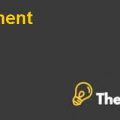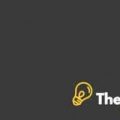VITAS: Innovative Hospice Care Case Case Study Solution
Recommendation:
As the organization’s main key issues were the decline is daily census and revenues. Two options to overcome this problem have been stated with their pros and cons. On the basis of Harvey Ball analysis, it can be said that option 2 is better option for the organization for better maintenance of its financial status. As the improvement in financial stability is achieved, and the organization has improved its services, and the cost issues significantly.The organization can bring gradual decrease in its payment to ease its patients.
Action Plan:
Short term Goal:
The short term goal for Vista is to overcome its financial instability. As recent financial status of the company is rapidly decreasing with respect to time.
Intermediate Goal:
The intermediate goal of the organization is to maintain its reputation in the market by retaining its trust of providing quality services to patients. This is to regain the daily census rate of the patients to achieve financial stability and with improvement of service quality with time.
Long Term Goal:
The organization was to lead in the healthcare industry by means of all of its quality service it provides to the terminally ill patient.
Contingency:
Two plans have been proposed for the key issues the organization is facing. If adaptation of first option fails, then the organization should follow the second one. However, first plan might not seem that much affective, but it has the tendency to cause long term benefit to the organization.
Conclusion:
The hospice healthcare centre in the US provides palliative care to the patients who suffer from serious medical conditions. The organization offers the patients to live their last days of life in a comfortable environment, according to their desire. The organization was working so well but due to the unplanned strategy of the employment; the quality of the services got badly affected, which reduced the daily census and revenues. For this issue, the organization has been suggested to opt for two options, out of which, the first option seems better to be adopted by the organization, as it will provide the long term benefit to the organization.
Exhibits
Exhibit 1:
| 1997 | 1998 | ||
| Average Daily Census | Revenue | Average Daily Census | Revenue |
| 81 | $3,706,301 | 67 | $3,065,847 |
Exhibit 2:
| Strength | Weakness |
| · 24 hours service for terminally ill patients to provide palliative care.
· Last few months of life spent comfortably. · Less expensive than curative care.
|
· No specific employment strategy.
· No incentives payment. · No staff after three hours of the duty time.
|
| Opportunities | Threats |
| · Improved quality of services.
· Expansion of provision of palliative services. · Increased number of daily census. · Increased revenues. |
· Decline in daily census below 50.
· Financial instability. |
Exhibit 3:
| Political | Lack of insurance compensation because the patients do not fit on insurance requirement. |
| Economic | Instability of the employment rate effect the quality of services.
|
| Social | The changes in the belief of the people significantly affect the organization. |
| Technological | Investment in the R&D to improve its technological services. |
This is just a sample partical work. Please place the order on the website to get your own originally done case solution.








